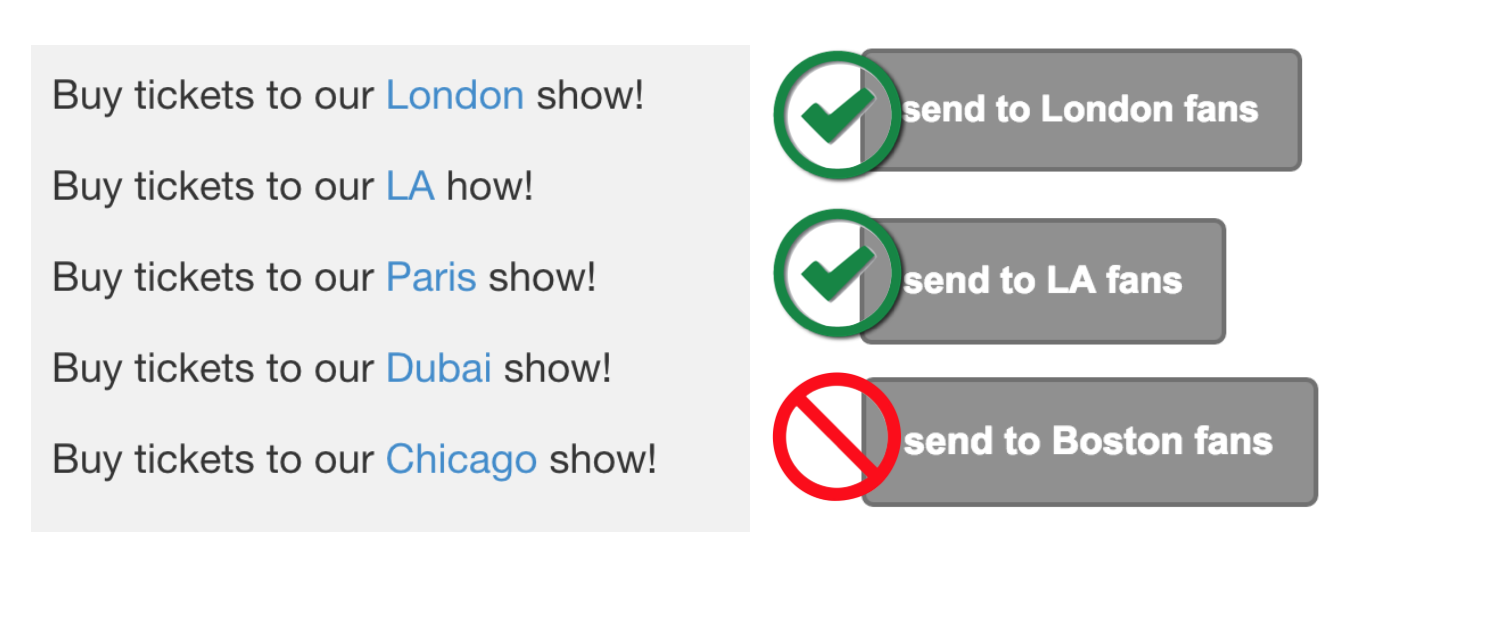Driving Ticket Sales
Main image by Sergio Alejandro Ortiz,
Creative Commons Zero license.
Social media provides an alternative to traditional marketing methods. It's fair to say it's taken most industries by storm as an absolute necessity, particularly for direct consumer facing brands.
In the hype it's easy to overlook the good ol' fashioned email blasts. Doing so would be an oversight. We have found email to outperform everything else when it comes to driving ticket sales.
Email Beats Social Media
When it comes to driving ticket sales, nothing beats an email blast. Here is a checklist for you on how to create an effective email campaign with the aim to drive ticket sales.
Step 1: Write Email Blast

Make it very clear what you want people to do, in this case buy tickets.
There's a difference between announcing "we're on tour now" to "buy tickets now to our show in London".
The best emails outline exactly what is expected of the audience. Here's a little template you are free to use.
Hey [name],
We're touring in Europe in September. We'll be performing in London, at the Roundhouse on September 19th.
[Buy Tickets Here]
We hope to see you there!
Best,
[Band name]
Step 2: Create an Appropriate Offer To a Specified Target Audience

People already get a ton of emails, and aggressively unsubscribe to anything that can be thought of as spam. The best way to avoid this, is to only send out emails to those who the message is intended for. People in Boston are probably not traveling to London for your gig.
For extra bonus point, create a specific campaign for each city and tell the audience how excited you are to be performing there.
If there's any variation between the gigs, this is the perfect opportunity to let the audience in on any sneak peeks ("we'll be having a guest performer!").
Step 3: Expect It To Be Opened On A Phone

Most services (including ours) that let you send out mass emails already make sure the email looks nice on a phone. We recommend double checking if it looks nice on your phone before sending it out.
This check should not just be for function, but also for layout.
Here are some things to look out for:
– If it's a short email, does everything fit nicely on the screen?
– Does the reader have to search around for the 'buy tickets' button?
– If you would receive this email, would it find you well?
– Do the links work?
– Is it clear what you're asking of the audience?
Step 4: Have a Clear 'Call to Action' (CTA)
A call to action is what you're asking of the audience. Are you asking them to buy tickets? Then you need a have a big nice button that says 'Buy Tickets' on it.
Step 5: Control Where The CTA Takes Them
There's nothing more annoying than being taken to a website that is completely unrelated to the email.
Like getting a well written email that says "buy tickets to our London show" but then links to the band's main webpage. Suddenly the reader needs to a) remember why they're there in the first place, b) figure out where tickets are being sold – is it under 'Live' or 'Tour' or 'Events', c) find their relevant event amongst all the other ones.
This friction will cause many to lose interest, and not buy tickets. The email should lead to a landing page that reiterates exactly what was said in the email.
If the email is announcing the full tour, the landing page should have a landing page with an overview of the full tour. Better would be to have one landing page per event though.
Step 6: Make Sure Your Landing Page Works On All Screens

Most people will open your email on their phones. That's the moment you want them to get tickets. Not later when they're on their on their computer.
People should be moved from email > landing page > sale when they get the email, whether they get it on a phone, computer, or any other device.
The way to do that is to make sure where your CTA sends them, your landing page, will be just as beautiful and functional on phones as on any other screen.
Things to look out for:
– Is the marketing message consistent with the email?
– Is the call to action visible (so people don't have to search for it)?
– Does it work on a phone?
– Does it work on a laptop?
– Does it work on a tablet?
So Where Does Social Media Come In?
A good email should generate thousands of clicks and hundreds of conversions easily. A tweet? A few dozen clicks. An unpromoted Facebook page entry? Very few views. So why not skip the social media entries entirely in favor of email?
Well, the social media entries help drive engagement. Engagement helps drive fans to your site and landing pages where you can get them to sign up for your emails. So one doesn't really work without the other.
Think of it this way:
Social media is good to create interest
and build your brand. Email is to drive sales.
That's why when the aim is to drive ticket sales, email should be the go to option.
Read more here.
Email Blasts Spike Ticket Sales
We've seen this time and again.
A spike in ticket sales for Monster Jam tickets at 8am EST on Tuesdays when they send out their weekly emails. Staggered spikes for the Major League Baseball teams when they promote double-headers.
Again and again. Remember this needs to be mobile focused as more than 60% of personal emails get opened on a mobile device - and only on a mobile device.
We translated this post into a checklist in Trello.
See it here.
